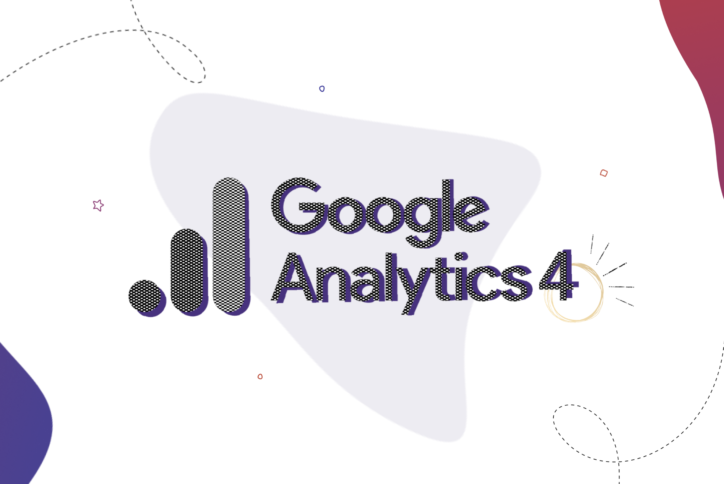For digital marketers, the upcoming transition to Google Analytics 4 is a major event. Here’s what you need to know.
By July 1st, 2023, the standard version of Google Analytics (Universal Analytics) will stop processing new data, making the next-generation update Analytics 4 the only Google tool available to track and report web analytics.
This is a big deal for digital marketers, many of whom rely on Google Analytics for essential website traffic data such as page views, operating system, browser and device information, approximate geolocation, and more — information that is key to making marketing decisions based upon a data-driven understanding of who the user is and how they interact with your website.
The update, the most significant ever made to Google Analytics, will add powerful new features to your digital marketing tool belt, providing more data throughout the entire customer journey, including their level of engagement, monetization, and retention, and enabling you to improve your decisions and ROI.
However, with such an extensive update, there is much to learn for digital marketers. In this overview, we’ll dive deeper into what digital marketers need to know about Google Analytics 4.
Google Analytics 4: A Digital Marketer’s Overview

What Is Google Analytics 4?
In recent research, 84% of marketing decision-makers around the world considered cross-platform analytics as critical or very important. Yet, more than half of those surveyed also cited the management, organization, and synthesizing of data as a major challenge, making it difficult to get a complete view of customers and gain meaningful insights.
Rapidly evolving trends in consumer behavior and privacy policies and standards are outpacing existing analytics solutions, and it’s a problem for marketers — one that Google aims to fix.
Designed to be the future of measurement, Analytics 4 (GA 4) will introduce important new features for marketers, from smarter insights and deeper integration to evolved data and more granular controls.
These new features will build on seventeen years of foundation; Google Analytics has been the industry standard service for measuring, collecting, analyzing, and reporting web data since 2005. Today, it is the most widely-used analytics service on the market, and the GA 4 update aims to catapult it boldly into the future.
What’s New in Google Analytics 4 vs. Universal Analytics (Google Analytics Standard)?
Google Analytics 4 offers many advantages over its predecessor. For example, GA4 has an improved user interface that makes navigating the data easier and faster. GA4 also offers event-based data collection, which is more accurate and detailed than the pageview-based data collection of Universal Analytics (UA). Additionally, it offers integrated machine learning capabilities, giving digital marketers access to more sophisticated insights about customer behavior.
Other key new features and improvements include:
- Enhanced Measurement: GA4 offers enhanced measurement capabilities, allowing you to track more data points and get a better understanding of user behavior.
- Advanced Segmentation: You can now use GA4 to segment users into different groups, such as new or returning visitors. This allows you to get a better understanding of how different groups of visitors are interacting with your website.
- StreamView: With StreamView, you can view real-time analytics data.
- BigQuery Export: This new feature enables you to export data to Google BigQuery so that you can analyze your data more deeply.
- Machine Learning: GA4 also includes machine learning capabilities, allowing you to gain deeper insights into user behavior and preferences.
Additionally, GA 4 is focused on user privacy, offering more control over the data that’s collected and how it’s used. This helps digital marketers ensure compliance with data privacy regulations like GDPR.
What Are the Disadvantages of Google Analytics 4?
Unfortunately, Google Analytics 4 does not come without its share of disadvantages, too. Here are some factors about which the S2 team is particularly apprehensive:
- GA4 is a “retrofitted” product, meaning it was originally built for the mobile app, and Google has modified it for web usage. For this reason, the data displays differently than much of the data on Universal Analytics.
- The way Analytics 4 tracks data is fundamentally different from UA. As mentioned above, page views tracking is gone, and now all data tracking is “event-based.” While there are pros and cons to this change, a lot of older web analytics metrics will now become deprecated over time.
- Certain engagement metrics are changing. For example, Bounce Rate will now be referred to as Engagement Rate, so how this metric is calculated will also change. In short, all users will have to make the adjustment to server-side tracking, where one central system collects all data and relays it to third-party vendors. For better or for worse, this will be the predominant way these platforms will handle data moving forward.

How To Set Up Google Analytics 4
If you create a new property (like a website, mobile application, blog, or other property), you will automatically use GA 4 by default. However, if you are using the previous version, you’ll need to make the switch. This is more complicated than it sounds; Google Analytics 4 is not an “upgrade” in the conventional sense of minor tweaks to an existing product. Rather, it is an entirely new tool, meaning your transition process will more closely resemble a cross-platform data migration than simply accepting an update.
What’s more, to initiate the transition, you’ll need to have both versions running simultaneously. Finally, you can’t directly import data into the new version from the old, so it’s a good idea to get a GA 4 property up and running (and collecting data) as fast as possible.
Having said all of that, Google does provide automatic tools that can help make the process of migrating your goals, users, audiences, and ad links as smooth as possible.
The sooner you migrate, the more historical data and insights you’ll be able to gather, so once again, the takeaway is clear: Start using GA 4 today. You’ll have to start using it in several months anyway, and you’ll be much better off if you start the process now (even if you continue also using Universal Analytics at the same time).
For an in-depth guide on how to navigate the process of setting up and migrating to Google Analytics 4, take a look at the relevant section of Google’s Analytics Help resource.

Is Google Analytics 4 Worth It?
In short: Yes, not only for the improvements but also because if you want to continue using Google Analytics…you soon won’t have a choice!
Of course, as an entirely new product that is still developing, GA4 may come with drawbacks and limitations, and the learning curve may be steep. Some marketers may search for an alternative, and perhaps a better option will become clear with time. In the short term, however, the most practical choice is to start using GA 4 as soon as possible. This will give you more time to learn the new interface, work on migrating your data, and start collecting new data right away.
Is Google Analytics 4 Free?
There is some good news: the new version of Google Analytics will still offer a free price plan! There is no cost to tracking key metrics and running tags on your website or apps, although customers who purchase the monthly Analytics 360 paid plan will gain access to increased functionality and more advanced features.

The Bottom Line
Overall, Google Analytics 4 will help you level up your collection, organization, and interpretation of data. Even if the product proves frustrating at first, it’s worth it for digital marketers to start getting their hands dirty with GA 4 today to avoid falling behind.
If you’d like further guidance on what this seismic shift means for you, reach out today.
Subscribe to our monthly S2xAccess newsletter:


